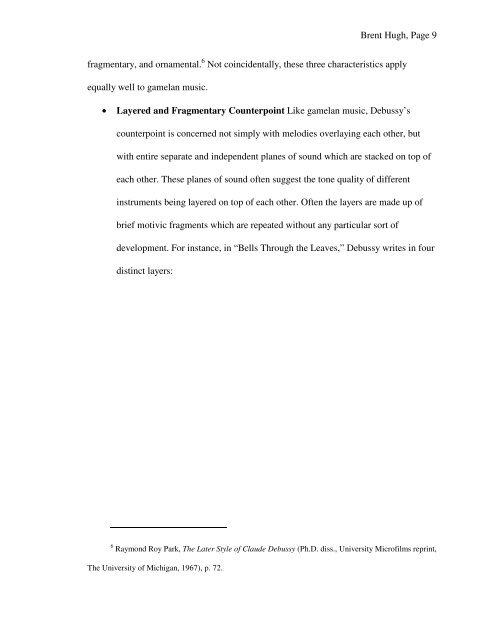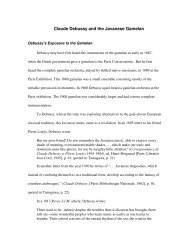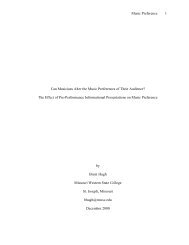Claude Debussy and the Javanese Gamelan
Claude Debussy and the Javanese Gamelan
Claude Debussy and the Javanese Gamelan
You also want an ePaper? Increase the reach of your titles
YUMPU automatically turns print PDFs into web optimized ePapers that Google loves.
Brent Hugh, Page 9<br />
fragmentary, <strong>and</strong> ornamental. 6 Not coincidentally, <strong>the</strong>se three characteristics apply<br />
equally well to gamelan music.<br />
• Layered <strong>and</strong> Fragmentary Counterpoint Like gamelan music, <strong>Debussy</strong>’s<br />
counterpoint is concerned not simply with melodies overlaying each o<strong>the</strong>r, but<br />
with entire separate <strong>and</strong> independent planes of sound which are stacked on top of<br />
each o<strong>the</strong>r. These planes of sound often suggest <strong>the</strong> tone quality of different<br />
instruments being layered on top of each o<strong>the</strong>r. Often <strong>the</strong> layers are made up of<br />
brief motivic fragments which are repeated without any particular sort of<br />
development. For instance, in “Bells Through <strong>the</strong> Leaves,” <strong>Debussy</strong> writes in four<br />
distinct layers:<br />
6 Raymond Roy Park, The Later Style of <strong>Claude</strong> <strong>Debussy</strong> (Ph.D. diss., University Microfilms reprint,<br />
The University of Michigan, 1967), p. 72.





